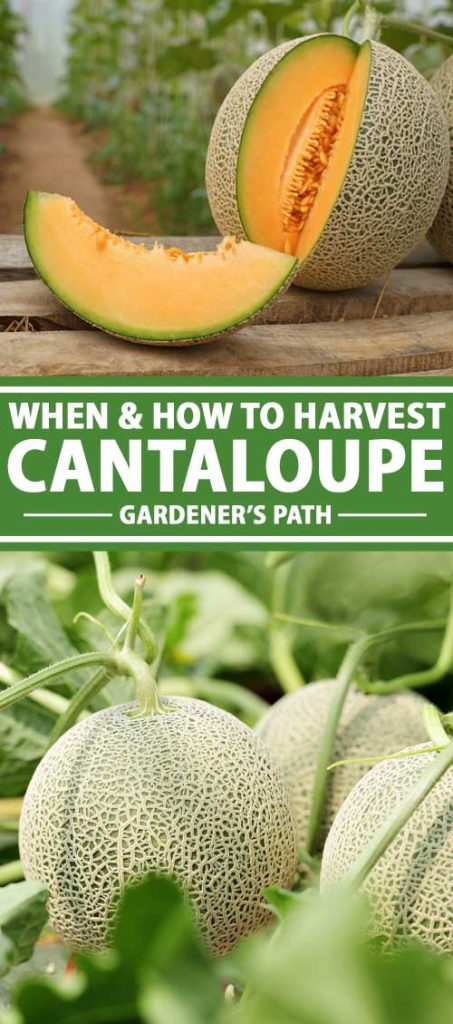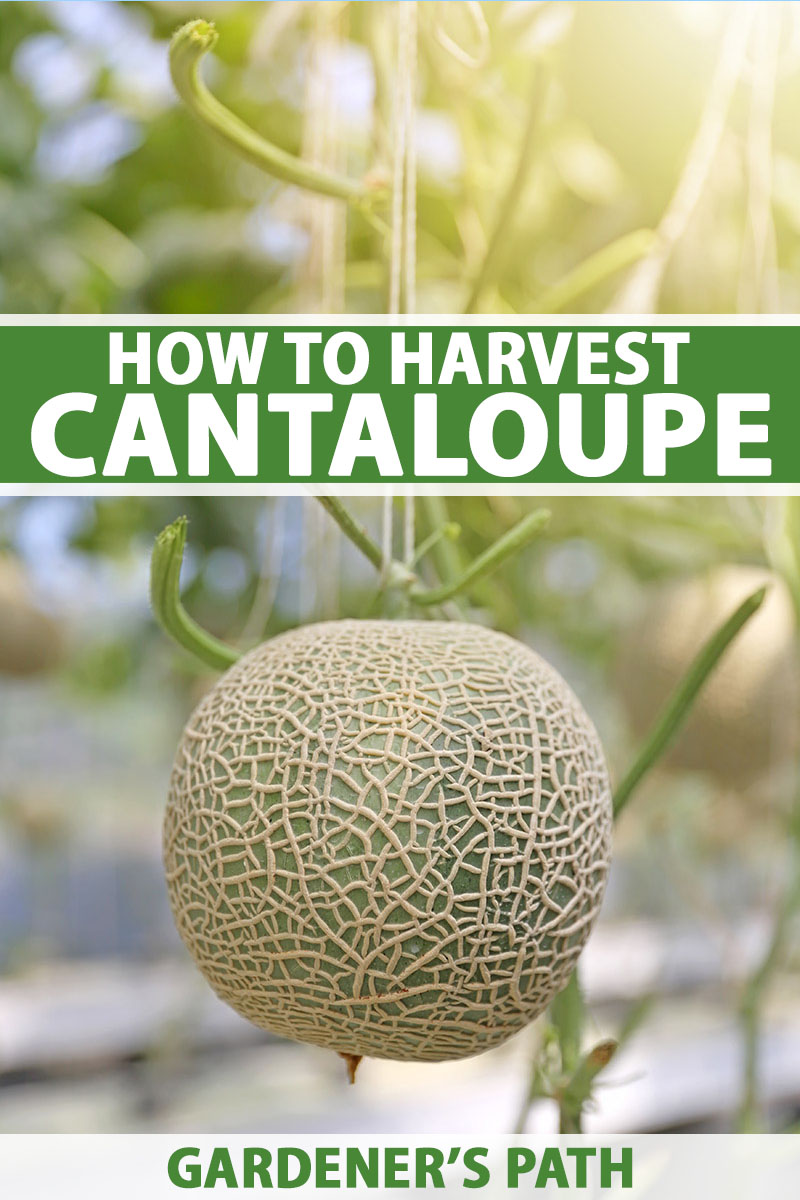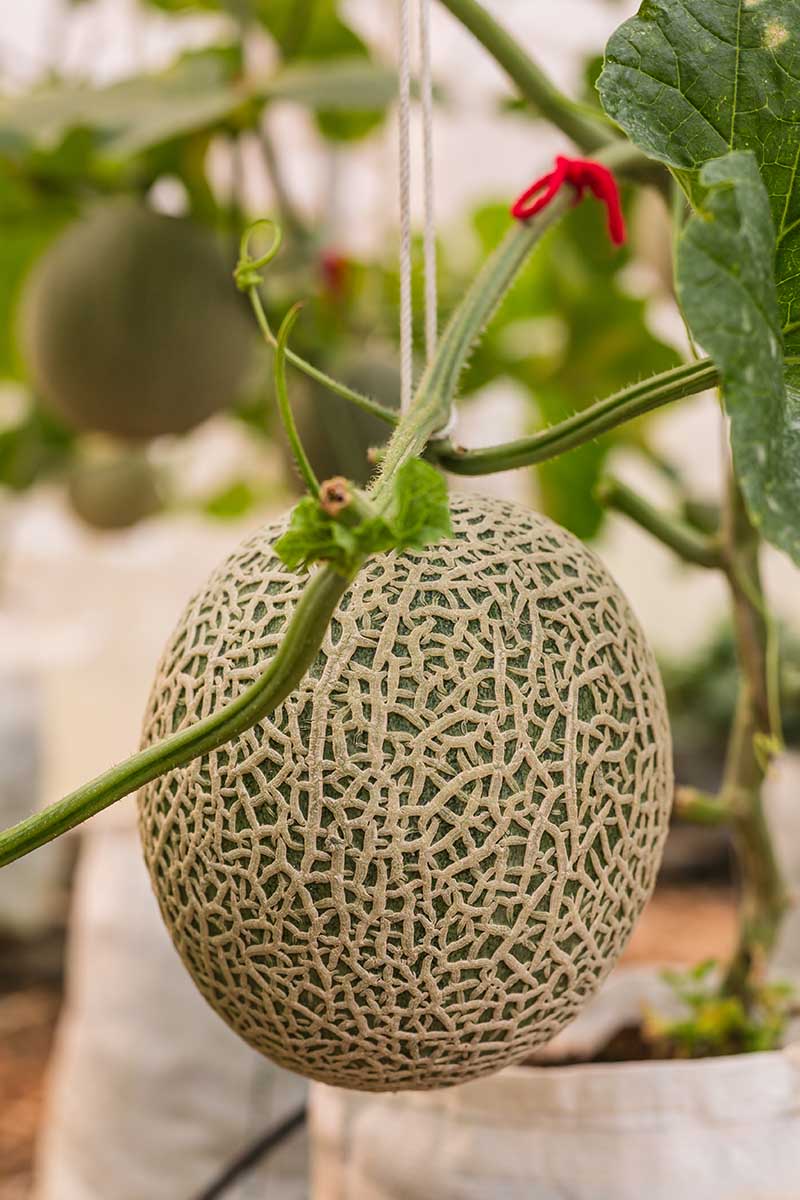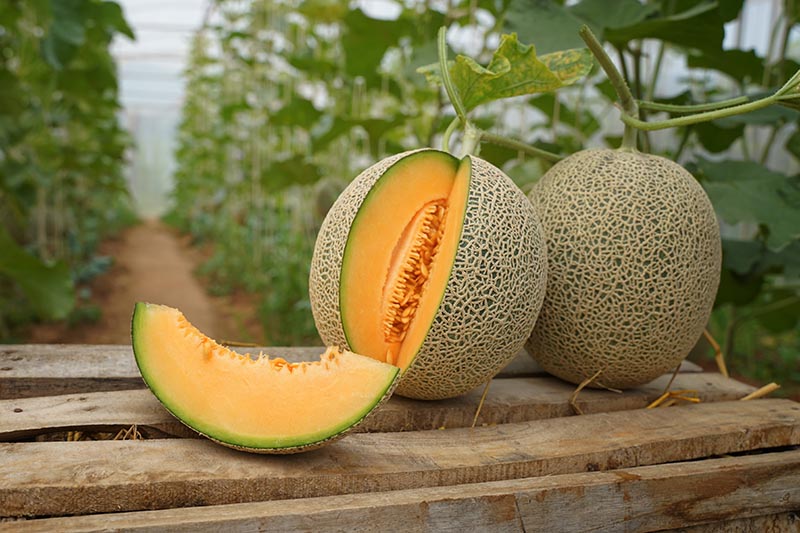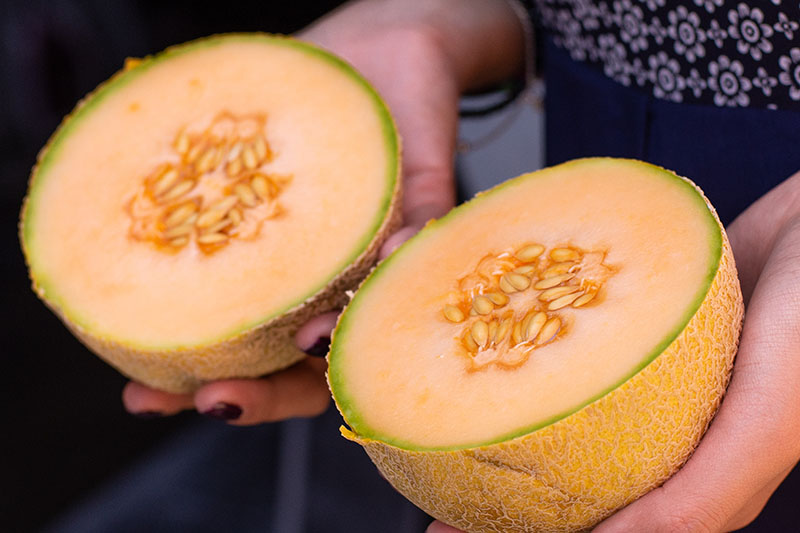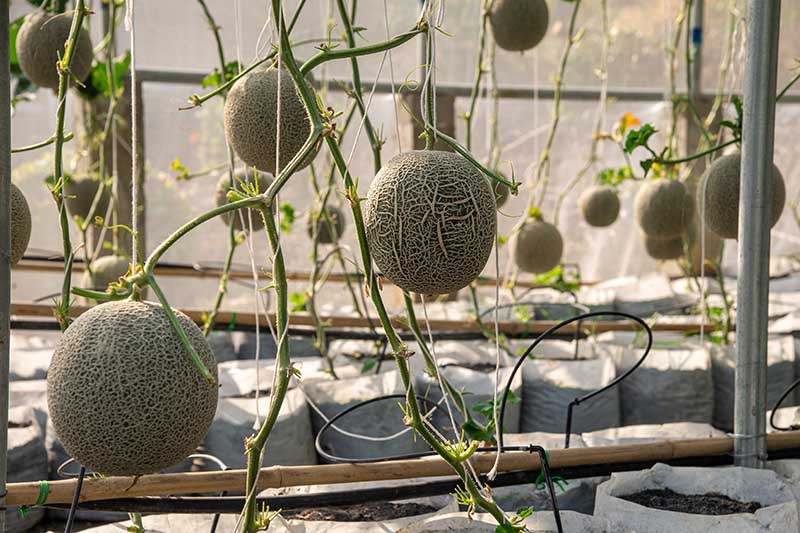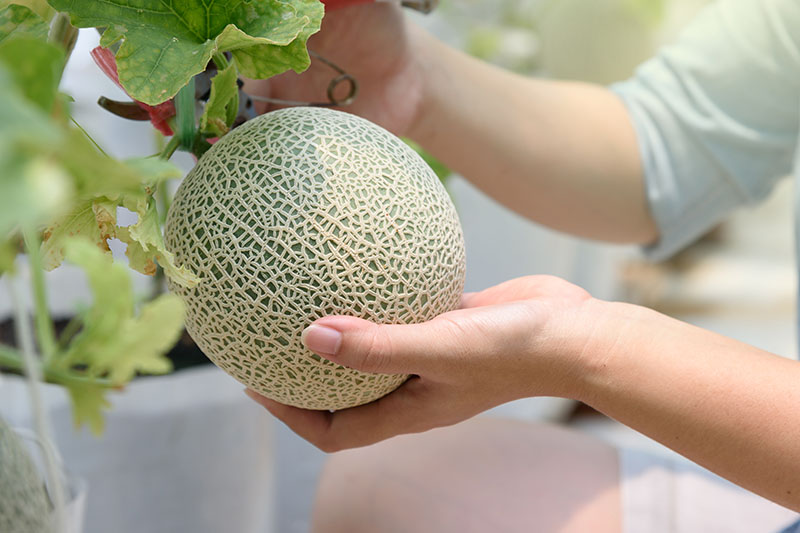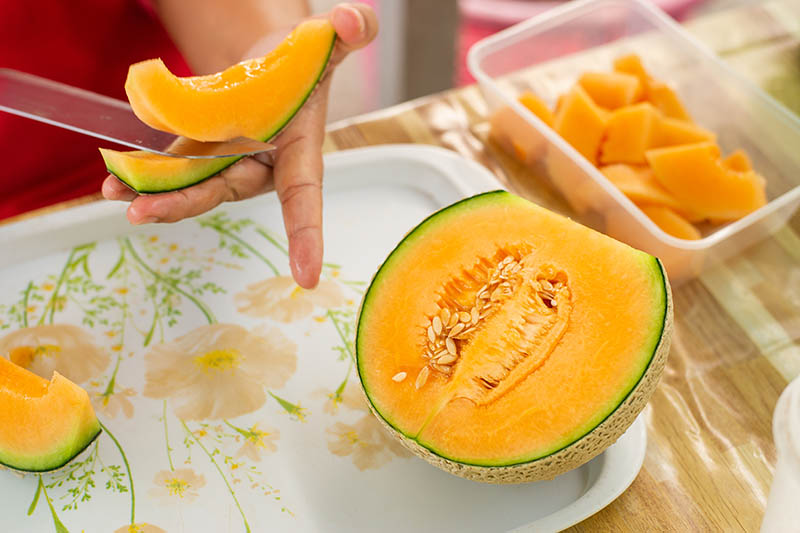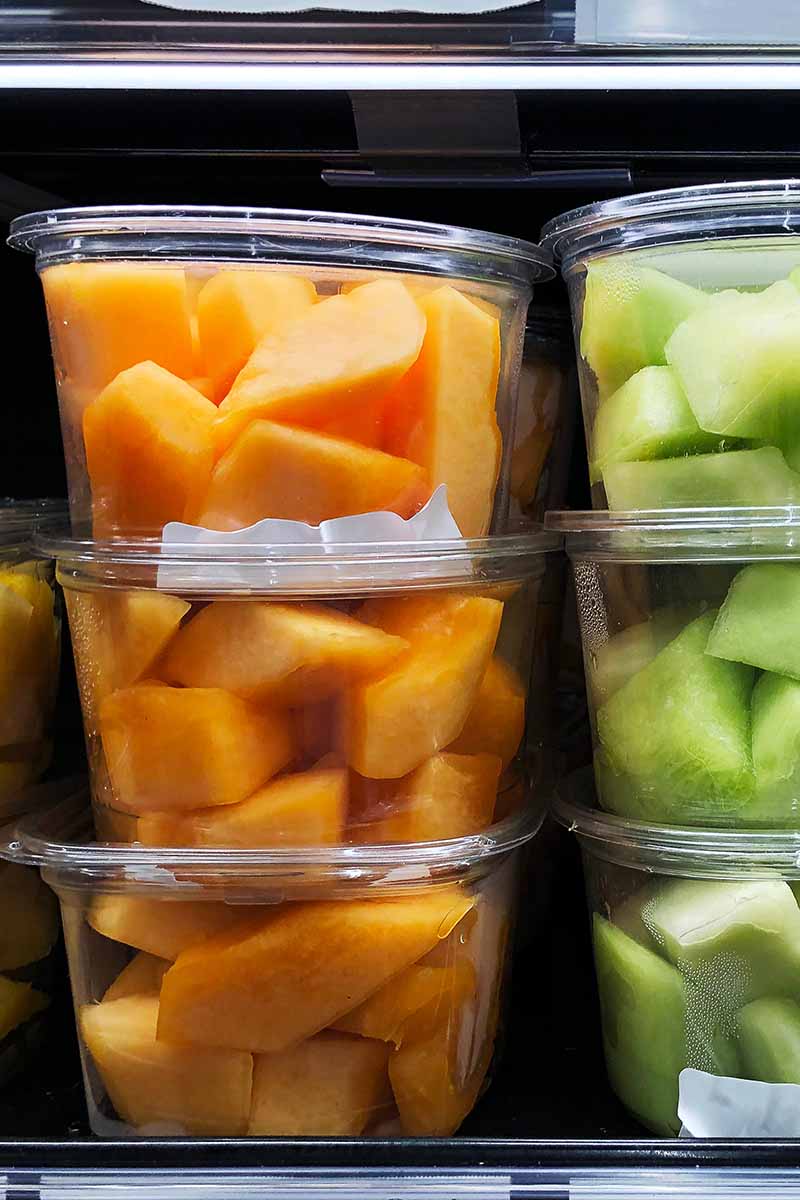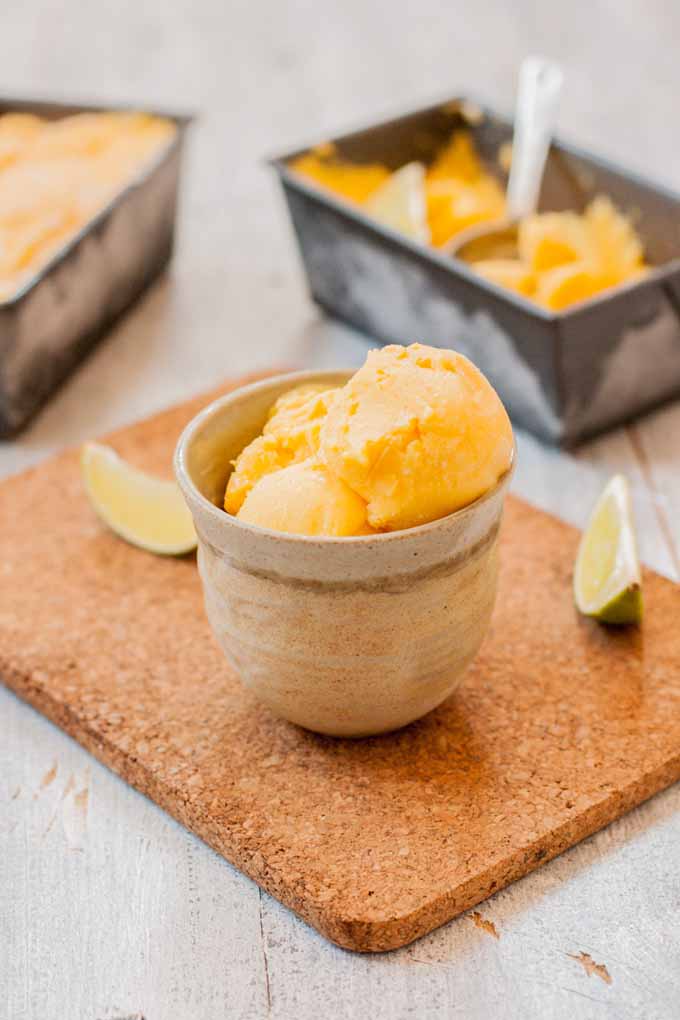Of course not! And there’s no better reward for the work involved in planting and growing this tasty melon. Maybe your melons are looking more and more mature every day, and you’re not sure when to harvest them. We link to vendors to help you find relevant products. If you buy from one of our links, we may earn a commission. Here’s what I’ll cover:
When to Harvest Cantaloupe
This sun-loving fruit takes about 65-90 days from germination to reach maturity – depending on the variety – and when you consider the size and complexity of a melon, that’s impressive. So depending on your USDA Hardiness Zone and the cultivar you are growing, you might be harvesting melons as early as June, while others may have to wait until late August.
You don’t want to harvest your cantaloupes too early or they won’t be sweet enough (this is how I always feel about the seemingly inexplicably named honeydew – sorry, honeydew lovers out there!). And if you wait too long, they’ll get mealy and squishy. Yuck. If you do harvest a slightly unripe melon, it will continue to soften, but the sugar content of the fruit will not increase. It won’t be quite as sweet as it would be if it had ripened on the vine.
Unripe cantaloupes will still be green, and you’ll be able to see this through the web of “netting” that develops over the rind. Check your seed packet or your garden planner to determine when they’re about a week away from their due date, and at that point, reduce irrigation. You want to water just enough to prevent the vines from wilting. This will allow the sugars to concentrate in the flesh of the fruit, and helps to prevent the fruit from splitting.
Now is also the time to watch the melons closely. As soon as the netting turns creamy-yellow and the rind below it turns gold, it’s time to sniff the end of the fruit that’s connected to the vine. If it smells musky and sweet, it’s time to pick! But if you don’t smell anything, give it another day or two. While you’re down there sniffing, check the connection between the vine and the melon. Does the melon appear to be detaching from the vine, or is there a crack in the stem? If so, it’s ready for picking.
According to the experts at the Virginia Cooperative Extension, for the best flavor, muskmelons like cantaloupe should be harvested at a stage known as “full slip.” This is when the stem separates easily from the fruit, without twisting or pulling. For a longer shelf life, they can be harvested at the “half slip” stage, which is noted when you can see a slight depression at the stem end. But the flavor may be compromised. This is often done in commercial growing, but there’s no need to compromise flavor when you’re growing your own, if a longer shelf life isn’t a concern for you!
How to Harvest
It’s unbelievably easy to harvest a ripe cantaloupe. If you live in a colder growing zone and have to work hard to keep the melon warm enough all summer like I do, this is the cantaloupe’s crowning gift – aside from its sweet flesh, of course.
All you have to do is gently pull it off the vine, and it will practically leap into your arms. That’s literally all there is to it.
Take it to the kitchen, and if you are going to eat it straight away, scrub the rind with a soapy vegetable brush under running water, rinse it well, and cut it up. For expert tips on how to do that, check out this cantaloupe-cutting guide from our sister site, Foodal. And don’t feel ashamed for not knowing how to cut up a bulky melon! Back when I was in college, I bought an onion for a dish I was cooking in my illicit dorm-room kitchen. (Okay, I had a mini Crock-Pot, which I used often to avoid the greasy cafeteria food). I got a knife out, looked at the onion, and balked. Even though I’d grown up helping my parents cook, I’d somehow never peeled and cut an onion myself. Go ahead, laugh at me. But those of you who are hesitant about slicing into your beautiful garden-grown melons can rest assured that you’re not alone.
If you’re not going to eat the cantaloupe right away, store it whole and unwashed in the refrigerator. It’ll keep there for a whole week. Just remember to wash it before you cut it, to avoid letting any bacteria on the rind transfer to the sweet flesh inside. Cantaloupe that’s already been cut will stay fresh in an airtight container in the refrigerator for up to three days. Or, you can freeze the cubes on a cookie sheet layered with wax paper.
After several hours, transfer them to airtight plastic containers and store in the freezer for up to a month.
Recipes and Cooking Ideas
Most of us probably love eating cantaloupe all by itself, fresh off the rind. And there’s nothing wrong with that! But it also makes a perfect substitute for mango in this recipe for a strawberry mango smoothie, from our sister site, Foodal (does that not sound absolutely refreshing and amazing?). For something really different, you can even make cantaloupe bread by substituting freshly grated melon for the zucchini that’s called for in this garden-fresh bread recipe, also from Foodal. I will most definitely be making cantaloupe bread when these little guys mature at the end of the summer: Or what about a no-churn cantaloupe, lime, and cream cheese sherbet? Switch out the mango pieces called for in this frozen dessert recipe for your frozen chunks of melon and prepare for an irresistible taste sensation. It’s perfect for cooling you down on a hot summer’s day. You can find the recipe over at Foodal. If you want to get adventurous with a sweet and tangy salsa but don’t care for mangoes (guilty!), chop some cantaloupe up into small pieces and toss it into your favorite fruit salsa as a tasty substitute.
A Happily Harvested Melon
Now that you know how easy it is to harvest your cantaloupes, you can sit back, relax, and watch them mature.
I recommend heading to the garden to check on them daily as they approach their maturation date. Now that you know how to spot the signs of harvest readiness, you’ll know exactly when to pluck them from the vine. Have you ever grown, harvested, and enjoyed fresh cantaloupe from your garden? Let us know in the comments below! Are you looking for more cantaloupe growing and care tips? Then check out some of our other expert guides:
How to Grow Cantaloupe in the Garden Train Those Melons on a Trellis: How to Grow Cantaloupe Vertically How to Grow Cantaloupe in Containers
Photos by Laura Melchor and Raquel Smith © Ask the Experts, LLC. ALL RIGHTS RESERVED. See our TOS for more details. Uncredited photos: Shutterstock.
